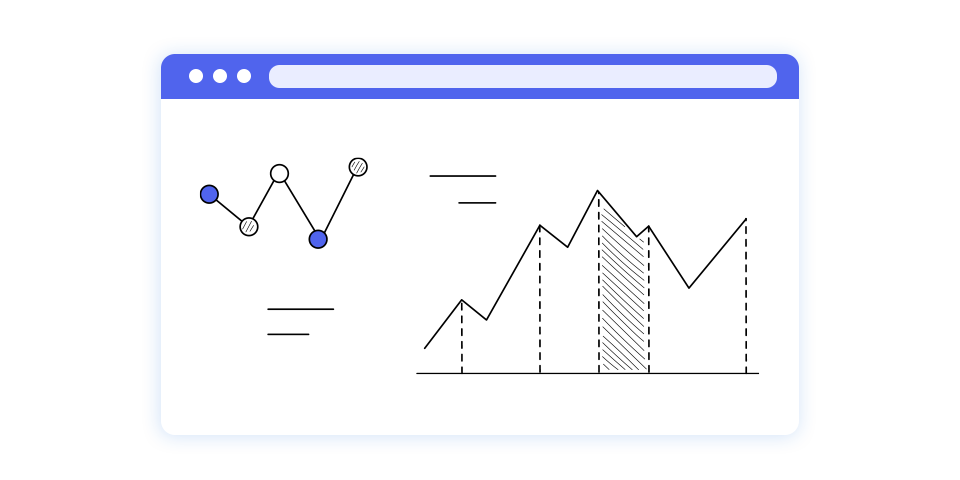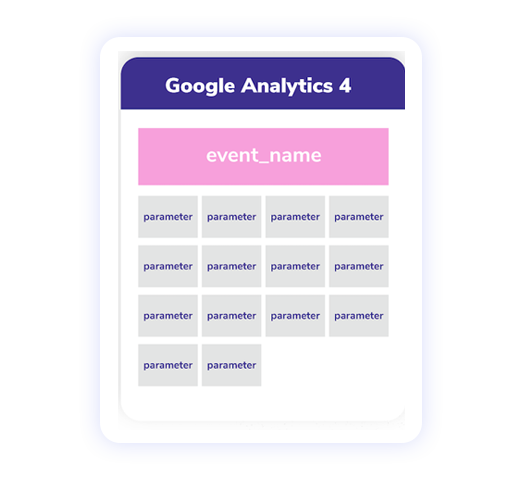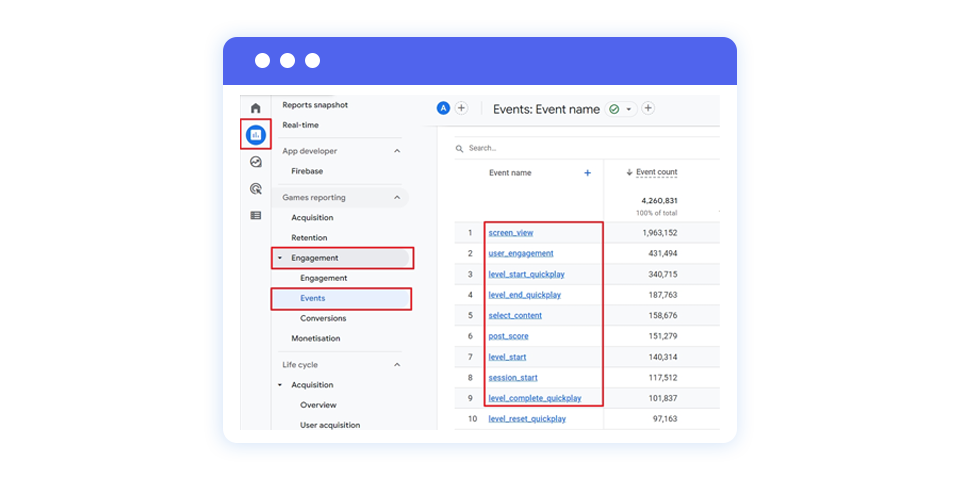With Google Analytics 4 events, you can track all user interactions on your website or mobile application.
It instantly records all interactions on your website such as page views, clicks, scrolls and purchases. You can then track this data in real time whenever you want. You can also monitor user behavior over a certain period of time.
Google Analytics 4 version works differently than older versions. In this version you have the chance to track all user interaction data as events.
We will discuss in detail the answers to questions such as what is activity in Google Analytics 4 and why you should use G4.
What Is an Event in Google Analytics 4?

In Google Analytics 4, activity is the name given to all actions taken by a user while spending time on your website. The user can add products to the cart, fill out a form, click a link, and many more actions on your website.
By monitoring events, you can understand how a visitor interacts with content on your website. This gives you the opportunity to understand your target audience and learn their expectations.
Events are the basis for all reports, dimensions and metrics in GA4. By tracking the right activities, experts can evaluate the success of the marketing strategy, devise strategies that will bring more conversions, and obtain high-quality data to improve user interaction.
In the past, each event had to be set individually using the site tag or Google Tag Manager. Google Analytics 4 provides convenience for you in this sense. Many activities come structured on this platform. This makes it much easier for you to organize events. You need less coding and labeling knowledge here. GA4 can automatically capture a large number of actions without manual configuration. In this way, the installation process becomes easier and you can spend your energy on other processes.
Why Use Events in GA4?

If you are going to professionally monitor the people who visit your website and the interactions of your potential customers, event tracking is an important need for you. Without tracking activity, you can’t gain valuable information about how users use your website.
You can create your landing page, content and marketing campaigns based on the data you obtain during event monitoring.
You can use events in GA4 to measure clicks on buttons and links on your website. You can identify the most clicked buttons and turn more people into customers.
You can analyze scroll depth by tracking how far users scroll down a web page. In this way, you can improve your content and make some changes to the page layout.
By tracking the downloads of visitors to your website, you can link downloads back to the landing page and traffic sources. The traffic source can be social media, organic search or email. You can also measure the success of your marketing campaigns by tracking form submissions with GA4.
The most common activity for Google Analytics is form submission. If you have just started tracking Google Analytics 4 events, form submission will be a good start to track your potential customers. You can then continue watching different events.
Google is moving to remove rules-based associations. This shows that marketers’ activities will be limited by the process of associating them with pages and traffic sources in GA4. With Google Analytics, you can only track the number of forms submitted. You cannot track personal information. You also can’t learn offline conversions.
If you want to track your leads, better options than form submissions are marketing attribution tools. These tools give you more detailed information about the conversion process.
Track your visitors’ interactions. This could be a page visit, an ad click, or an email message opening. Use real user data to increase your sales. Don’t forget to measure your return on investment in this process.
This content may interest you: What Is Google Analytics Heat Map?
What Are Event Parameters in GA4?

Event parameters in GA4 allow you to obtain detailed information about a visitor’s interaction with your website. For example, you have the opportunity to add parameters related to the names, categories and prices of the products you sell on your website.
To fully understand the event data you can track with Google Analytics 4, you need to use certain parameters. You should know what Google Analytics event and event parameters are and understand how they work.
One of the parameters is the plan page view event, which records data every time a page is loaded. However, they need certain event parameters to collect the information you need.
You can send events to Google Analytics using parameters. These parameters are additional sections of information that depend on events. Google Analytics automatically sends parameters for each event.
The effectiveness parameters in GA4 are as follows;
- Page_view Event: This event performs the task of counting the views of a web page when it loads.
- Page_location Event Parameter: This parameter serves to send additional information about the event to reveal which pages were viewed.
- Click Activity: It is responsible for counting the activity every time a user clicks on an external link. With this event, you only have the chance to see how many times external links have been clicked in total.
- Link_url Event Parameter: This parameter sends additional information about the event. It tells you which specific URLs external link clicks point to.
One of the most important advantages of GA4 is that you have the chance to have 0-25 event parameters in each event. These parameters may differ in each case.
Automatically Collected Events
Automatically collected events can be specified as basic events that are automatically recorded in GA4 and that you cannot disable. For example, session_start is an event triggered when a visitor enters your website. Apart from this, user_engagement is triggered when your web page is in focus.
Once you add the Google Analytics 4 tag to your website, some events will be automatically tracked when a user views a particular page.
Events automatically tracked by Google Analytics 4 are as follows;
- First_visit Event: Starts collecting when a user first visits your website. This activity can also be used to track the “New Users” metric in your report.
- Page_view Event: This event can be used to report on the pages a user has viewed.
- Session_Start: This event is used to determine when the session first starts. Additionally, a new session_start event is triggered when the user does not perform any transactions for 30 minutes.
- User_engagement Event: You can collect this event periodically. It is used to report when a user spends at least 10 seconds on your website.
You cannot turn off or disable GA4 automatic events. These events are critical components for Google Analytics and chances are you will find them in your GA4 property.
To access automatically collected data in Google Analytics 4, first access the GA4 reporting view. Then press the “Interaction” button at the bottom of the “Lifecycle” section. Then click on “Events”. The reporting view displays all daily recorded events, including automatically collected events.
Session Start Event
You can monitor user behavior on your website by using ga4 event tracking. In addition to the entire session_start event, which is the session start event, it experiences two different states. First, Google Analytics does the job of creating a session ID for the session. This is the ga_session_id event parameter. This parameter applies to all events during the session. It is possible to group these events in GA4 session reporting.
During the session initiation event, Google Analytics also generates a session number for the session. In this process, the ga_session_number event parameter counts how many sessions the user has on the website.
You have the opportunity to save the ga_session_number event parameter as a custom dimension to keep track of the data while examining the session launch event.
First Visit Event
First visit event is used to identify new users on your website or app. The first_visit event parameter is triggered when Google Analytics does not recognize the user through the cookie in the user’s browser.
When ga_session_number is “1” in the session start event, your session count will match the event count for first_visit_event.
At the same time, the user_engagement event is triggered when a session is characterized as interactive for the first time.
User Engagement Event
User interaction activity persists for 10 seconds or longer. It also involves the visitor viewing more than one web page. One or more conversion events are involved.
The session is considered attended as soon as one of the events lasting more than 10 seconds, multiple page views and multiple conversion processes occur.
You have the chance to follow sessions and interactive sessions in the GA4 “Traffic Acquisition” report.
When you look at total sessions, the number of interactive sessions helps measure traffic quality. It carries out this process both quickly and effectively and gives you information about the interaction rate.
Enhanced Measurement Events
GA4 tracks advanced measurement events by default. Unlike automatically collected events, you have the opportunity to turn off advanced measurement events.
Advanced measurement events are one of the biggest improvement options for GA4. These events are automatically collected in Google Analytics 4 events.
Pay attention to whether the simple toggle switch is on. You have the chance to track all interactions such as file downloads, outgoing link clicks, embedded video plays, scrolling, etc. It should be on by default in GA4 events. However, we still recommend that you check it once.
To do this, click on the gear icon in the lower left corner in the GA4 interface and then press the “Administrator” button. Then click on the “Data Stream” section in the property settings. Make sure the blue bar is on to enable the “Advanced Measurement” options. Here the settings will be on by default.
In this section you can see a list of 7 advanced measurement events with one click. To turn an event on or off, you can press the “Save” button by moving the toggle switch.
All advanced measurement events constitute event data located in your Google Analytics property.
The advanced measurement events you can track in Google Analytics 4 are as follows;
- Page View: Triggers the page_view event whenever a new page is loaded on the screen.
- Scrolls: Introduces a scroll event that is triggered when a visitor scrolls 90% of the page down.
- Outbound Clicks: Click events triggered on all outbound link clicks directed from a domain on your web page.
- Site Search: Triggered when a visitor uses the search function on your website and a page containing the search results appears on the screen.
- Form Interactions: In these events, form_start is triggered when your visitor interacts with a form on your website for the first time. Additionally, the form_submit event is triggered when visitors submit the form.
- Video Interaction: This activity tracks the start, progress, and completion of the embedded YouTube video.
- File Download: This event is triggered whenever a file on your website is downloaded.
Recommended Events
Recommended events are slightly different from automatically collected events and advanced measurement events. In these events, you must manually set up the suggested events.
Google recommends that you specify names and use specific event parameters for the suggested events you create. After this process, the remaining workload is handled manually.
Ecommerce activities such as add_to_cart and begin_chechout or purchase on your website are all recommended activities.
Google suggests the specific event name and which event parameters you can use. Here you need to go through the process of defining the application and the suggested activities.
Custom Events
Special events also require special installation work. Unlike these suggested events, Google does not provide suggested names for custom events.
While the special events within this scope are valid for some sites, they are not valid for other types of websites.
Below we will give you a list of four specific events that a website should have;
- Cookie_consent_visible Event: This event is triggered when a cookie consent banner is opened.
- Cookie_consent_accept Event: This action is triggered when the banner is accepted or not closed or ignored.
- 10min_70scrool Event: Triggered if a visitor on your website scrolls down 70% of the page after spending 10 minutes on a single page.
- YouTube_any_click Event: This event is triggered when there are external links to the associated YouTube channel.
Custom events are required for a specific website instance. However, it may not be necessary for websites in different domains. There may be other special events required for those websites.
If you need to focus on specific events, you also need to pay attention to your unique measurement goals before creating an event tracking.
“Recommended Events” and “Custom Events” on GA4 are special and the implementation process is up to you. For the implementation process, you must first use Google Tag Manager to create a GA4 event tag. In this way, you can create the custom Google Analytics 4 events you want.
How to Set Up a Custom Event?
You can use one of two different methods to set up a Google Analytics custom event. These methods will be installation in the GA4 interface and installation with Google Tag Manager.
This will be more practical if you plan to create events in the GA4 interface. Here you can only create events based on existing events. The process of setting up an event with Google Tag Manager becomes more complex. You can be more specific about data collection here.
Here you need to determine the best method that will allow you to measure the metrics you want. First, check the gathering status of the event you plan to watch on GA4. Check out Google’s list of automatically collected events to see if Google is collecting the data you’re looking for.
Consider these points when giving a name to the events:
- The first character of the activity name must be a letter.
- Activity names can contain letters, numbers and underscores. There are no spaces or special characters.
- Activity names are case sensitive.
- Activity names should not use any of the reserved activity names or instances. If used, Google Analytics will show an error message.
- There is a maximum limit of 40 characters for event names. There is a maximum of 40 characters in the event parameter name and a maximum of 100 characters in the event parameter values.
How to Create Custom Events in Google Analytics 4 Interface?
The GA4 interface offers a convenient way to create custom events based on existing events. You don’t go extensively to create custom tags on Google Tag Manager custom events.
The steps to create a custom event in the Google Analytics 4 interface are as follows;
- First, log in to your Google Analytics 4 panel.
- Then click on the gear icon.
- After the “Events” button, click on the “Create Event” section and press the “Create” button.
- On the screen that appears, give a name to your special event and perform parameter configuration.
- After making your parameter settings, you should save your new events.
Special events are triggered only when an event occurs on your website that matches the conditions you specify.
This is how the GA4 custom event creation process is practical. After this process, you need to monitor the activities regularly. Create event in ga4 and monitor your website.
How to Create Custom Events with Google Tag Manager?
Google Tag Manager is essential when you need to create entirely new events on Google Analytics that are not necessarily based on previously submitted events.
The process of creating custom events with Google Tag Manager can be as follows;
- First, enter Google Tag Manager.
- Then click on the “New Label” button from the “Overview” screen.
- Give your label a clear name on the screen that appears.
- Then click on the “Tag Configuration” button.
- Click the “Google Analytics” button from the menu that appears and then select the “Google Analytics: GA4 Event” option.
- Then find the “Measurement ID” field, click on the icon on the right and save it as a variable to use again.
- Then choose an event name. Since this name will appear in your reports, it is important that it is clear.
- Open the menu by scrolling down and press the “Trigger” button.
- When the “Select a Trigger” menu appears on the menu that appears, press the plus symbol in the upper right. Here you can set a custom trigger to fire on the pages you specify.
- Give a name to your trigger on the new screen.
- After clicking on the “Trigger Configuration” module, select the triggers related to the metric you want to monitor from the list of options that appear.
- At this stage, you can determine the pages to be triggered. To do this, you need to select the circle next to “Some Page Views”.
- In the first pop-up menu that appears, press the “Page Path” button and in the next drop-down menu, press the “Contains” option.
- After this stage, click on the “Save” button on the top right.
- Then you will see the “Tag Configuration” and “Trigger” modules screen.
- Click the “Save” button on this screen.
- You will then come to the Overview screen, where if you see that it says “2 Added” under “Workspace Changes”, you can indicate that you have added a new tag.
- You can publish the changes by pressing the “Send” button in the upper right corner.
- At the last stage, you can enter the version name and description and press the “Publish” button.
Where Are The Events in GA4?

You can follow the practical steps to see the events in GA4. To follow these events, follow these steps:
- First, log in to your GA4 property.
- Once on your property, click on the “Reports” button.
- Press the “Interaction” button on the screen that appears.
- At the last stage, list the events in GA4 by pressing the “Events” option.
When you follow these steps, you can follow all the activities on the screen and apply some filters to personalize your report. You can easily track metrics such as number of triggers per event, average time spent, and percentage of users who triggered.
Conclusion
We explained what you were wondering about the GA4 events list. Google Analytics 4 events allow you to track interactions on your website. Here you will necessarily automatically track some events.
You can create custom events based on your website type and goals. When there are relevant triggers, you can follow these activities on your website from your GA4 panel. If you have any other questions about setting up events in ga4, ask us in the comments.
Frequently Asked Questions About
Google Analytics 4 allows you to track unlimited events across your web properties. Limited to 500 events named differently across application properties. There are limitations in collecting data for each event, such as parameters and user characteristics.
Make sure you’ve gone through the Google Tag Manager configuration steps and connected your Google Analytics property correctly. Check for correct triggering of actions during the process of creating suggested or custom events. In this process, you can monitor the triggering status by using the preview tool.
If you want to track scrolling, site searches, embedded YouTube videos, file downloads, and outbound clicks, automatic event tracking will suffice. Don’t forget to check the advanced metrics configuration for each of your data streams on Google Analytics.





No comments to show.